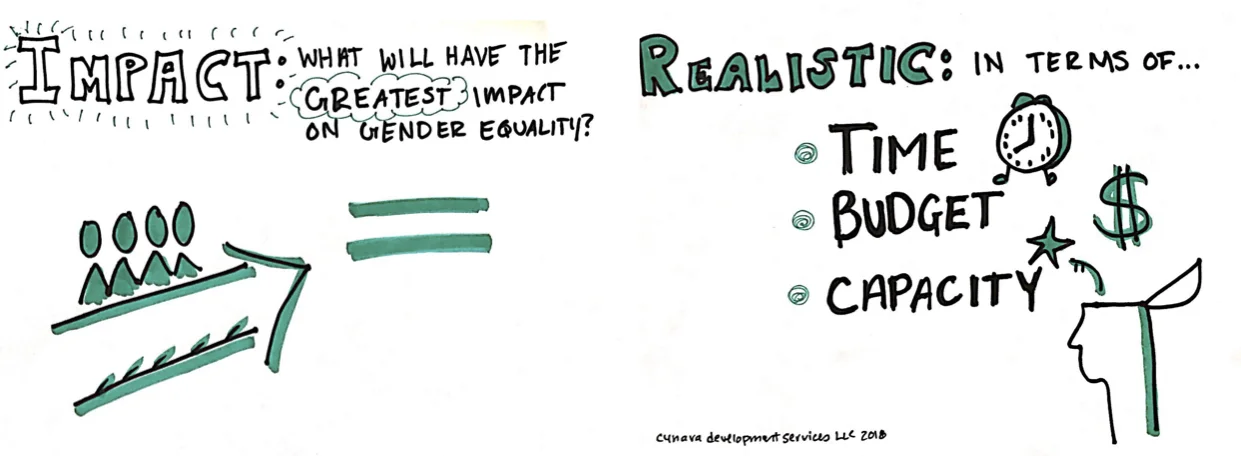What is strategic about your strategy?
“Stop managing your time. Start managing your focus.”
When I was making the transition from salaried employment to consulting, I scrutinized my experience to look for skills that were transferrable to a range of capacities. For years I had been leading and overseeing project planning processes that the international development and aid sectors refer to as gender analyses, which culminate in a gender strategy and action plan.
I recognized that this was essentially a form of strategic planning.
The gender analysis is the strategic analysis: you gather data, analyze information, and talk to stakeholders to assess the context. Then you use that analysis to prioritize your areas of focus, develop a work plan to implement your strategy, and identify indicators for monitoring and evaluating success. This is similar to what happens in traditional strategic planning processes.
In my past year and half of consulting I have led teams through strategic planning processes, often related to their organization’s strategy for gender equality and equity. The challenge with many of these groups is that their mandate is broad and extremely complex. They are supposed to integrate gender awareness, equity, and equality across the entire organization, which is akin to toppling institutionalized patriarchy. What’s more, they are expected to do it by themselves with a small group of people and a very limited budget.
In other words, your organization’s gender equality team is expected to have nearly impossibly high impact with nearly zero resources.
In the face of such a challenging mandate, it is essential to analyze and prioritize our activities through a lens of the potential impact it may have vis-a-vis the resources required. I have helped my clients do this in a couple different ways.
Participants in one workshop identified nine potential initiatives for their strategic plan. To help them prioritize them, I gave them two different color stickers: blue and yellow. Blue indicated that the activity would have high impact. Yellow indicated the activities that were the most realistic in terms of the time, money, and capacities required. Each participant voted on two activities that were their top priority in terms of the impact they would have, and two that were their top priority in terms of how realistic it will be to implement them, considering the time, money, and capacity required.
One of the participants in that workshop introduced me to a similar framework called the Bold Moves Decision Matrix, in which you analyze an activity’s potential for impact and its corresponding effort required by placing it on a continuum. It enables you to prioritize the activities that are high impact but low effort (aka low-hanging fruit) as well as the “bold moves” that are both high impact as well as high effort. The matrix then lets you whittle out the activities that are mere distractions (low impact and low effort) and those that should be avoided completely (low impact and high effort).
When I used this matrix with another client, they realized that several of their activities involve relatively little effort, but they actually do not know what the real impact is. They considered the reality that some those activities may be a distraction from work they could be doing that is more strategic. They also realized they were planning a lot of activities that fall in the ‘bold’ section of the matrix, and with their limited resources, they needed to cut back.
With such a broad mandate, it is tempting for gender equality advocates and practitioners to try to tackle everything.
We must continue to find and use strategies like these that focus our limited resources on the priorities that will have the greatest impact.
Now, how do we define impact? I’ll save that question for another post.
~ Lindsey


